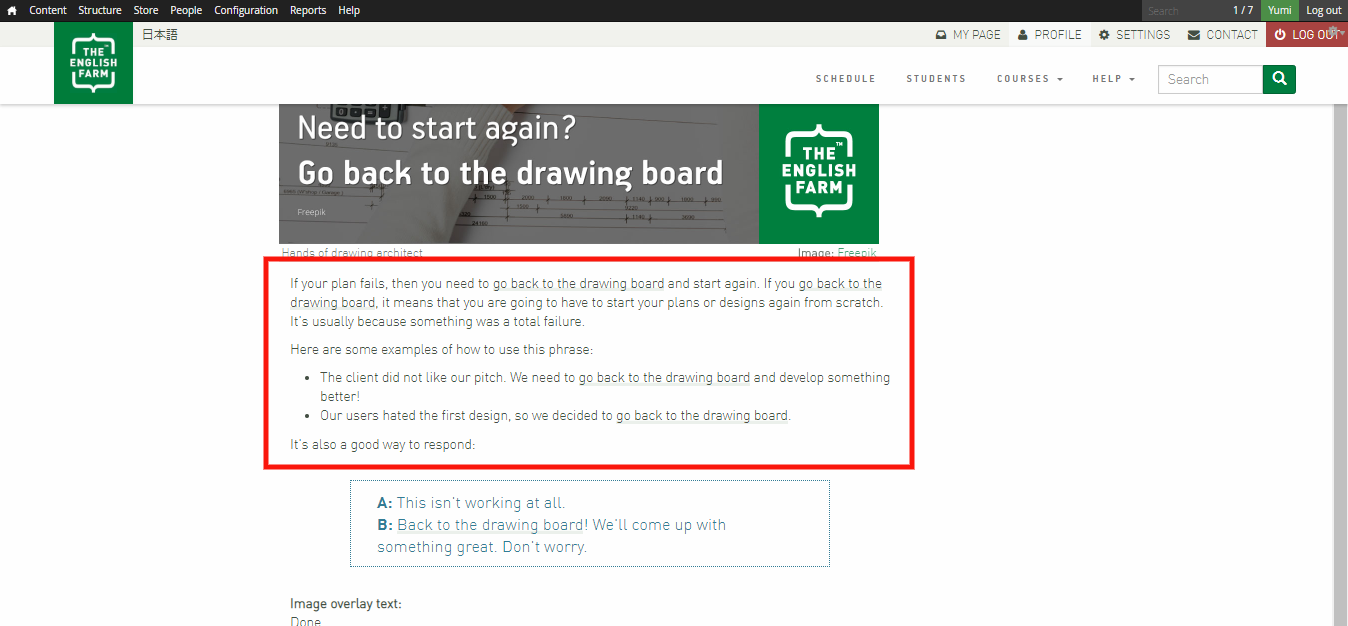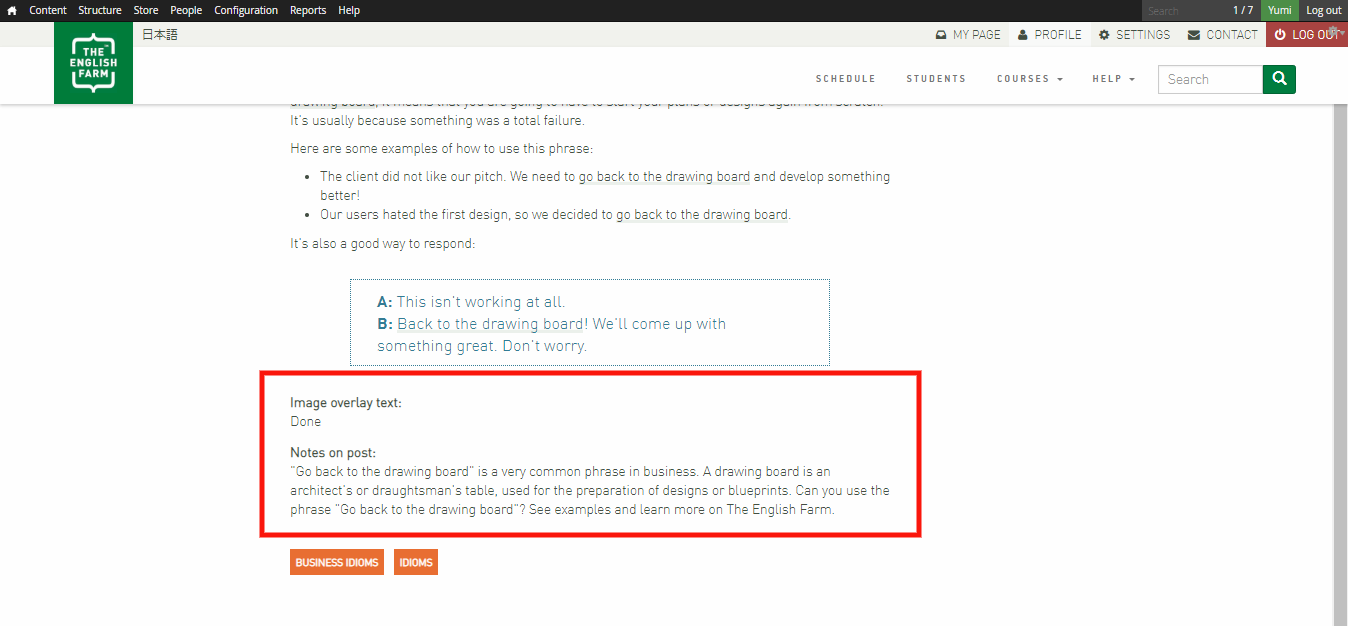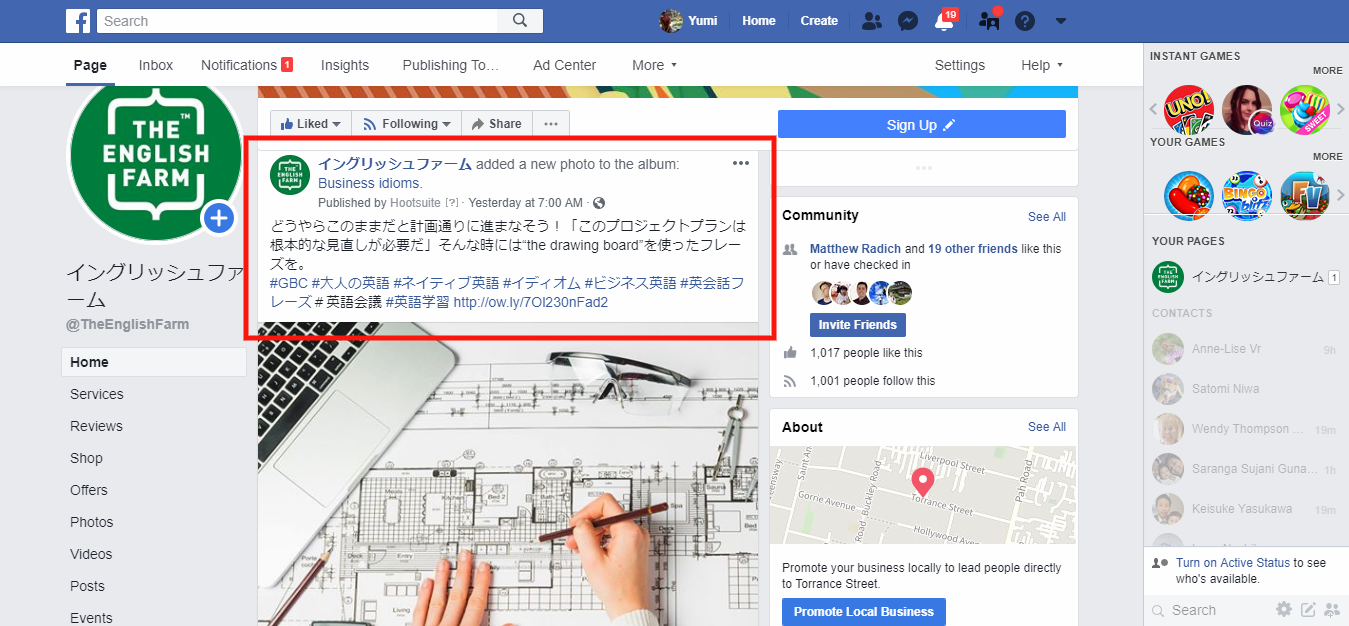Social media posts (idioms)
Social media posts are meant for our Facebook, Twitter, and Instagram accounts (images tend to get the highest engagement), and the goal is to get one up per week. The idea is to gain loyal customers from our existing clientele and lead potential students to our website.
The original template that Matt made for us is "back to the drawing board".
The process involves:
- Finding good idioms that would be relevant & interesting for students;
- Finding a picture that goes with it (they should be simple and not too cluttered—like the ones we have for blogs and discussion posts; they should be relevant to the literal meaning of the idiom, an image to help sear the wording of the idiom into a student's head. E.g. if you are writing a post for the idiom "see eye to eye", it should be an image of eyes, not two people who look like they are agreeing with each other);
- Writing the content for it (this includes an explanation, examples, and a dialogue):

- Writing the image overlay (the text you see on the actual image which will be done by Aki H.) and notes for the Facebook, Twitter, and Instagram comment. This part will be in Japanese (done by Mai), so it's more about writing something about the idiom that would make the reader want to click the link on the post to jump to our website (see more details on the Notes section below). The posting will be done by Aki H., so it wouldn't require you to have a Facebook account of your own or anything.

- On Facebook, it would look like this:
 You can put a Did you know? section on the bottom if you can find some interesting fact that has no direct relevance to how you use the idiom (e.g. the etymology or other phrases that sound like the idiom and mean the same thing). If there isn't anything interesting, you don't have to have it.
You can put a Did you know? section on the bottom if you can find some interesting fact that has no direct relevance to how you use the idiom (e.g. the etymology or other phrases that sound like the idiom and mean the same thing). If there isn't anything interesting, you don't have to have it.
Notes - Keep in mind that the person writing the comment in Japanese (or another language) may not be a teacher or a native English speaker. The notes should cover their possible blind spots. Some of examples of good notes would be:
- If a phrase would be useful for the GBC or a speaking test;
- Pointing out what students normally use instead of the idiom native speakers tend to use (e.g. students tend to overuse "on the other hand" which is a great phrase, but if they can use something like "on the flip side" too, it would actually impress native speakers. Whereas "on the other hand" isn't very impressive at all since every student uses it. It's also more current);
- If a phrase is consulting/business jargon; and
- Decomposing the phrase in a way that helps the student remember it as a visual image in their heads.
The person using the notes may or may not use what you wrote (but it's good to have the information there so they can use them).
Final tips to make a good social media post (for idioms):
- Keep the image overlay text short and sweet. Aim for around 10 words.
- The body should be around 125 words. It is meant to be a bite-sized piece of information. Imagine yourself after a long workday or before work studying for something. How much energy would you have? How could you make it easiest to learn something?
- The language should be easy to read. The only "translation" there will be the comment on the social media platform. Remember that you are writing for a non-native speaker. Simple language goes a long way. Try not to introduce new language so the reader can focus on the new idiom.
- Remember to tag your posts (idioms, business idioms, consulting). Please don't make up too many tags. Use existing tags whenever possible. If you think the new tag will be relevant and used again for future content, go for it.
- Brownie points for linking to other content (social media posts, blogs or discussion posts, lessons in in-house courses, or courses). See here for an example.
- Proofread! We are an English teaching school. Of course, we're all human, but please remember that these posts represent the quality of our teaching skills.